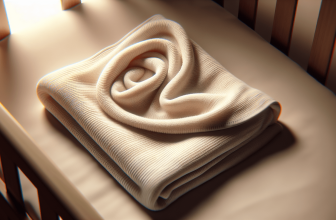Imagine the joyous occasion of giving your newborn baby their very first bath. It’s an important task that requires a gentle touch and a careful approach. In this article, we will provide you with a step-by-step guide to ensure your baby’s safety and comfort during their first bath. From preparing the bathing area to handling your little bundle of joy, we’ve got you covered. So, get ready to embark on this wonderful journey and create beautiful bonding moments with your baby as we guide you through each step of their first bath.
This image is property of images.unsplash.com.
Preparing for the First Bath
Giving your baby their first bath can be an exciting and memorable experience. To ensure everything goes smoothly, it is important to gather all the necessary supplies before starting. Some essential items you will need include baby soap, a soft washcloth, a baby shampoo, towels, and a clean diaper. Having these items on hand will make the bathing process much easier and more comfortable for both you and your baby.
In addition to gathering supplies, it is crucial to ensure that the room where you will be bathing your baby is warm. Babies are sensitive to temperature changes, so it’s important to create a cozy environment. You can achieve this by closing windows and doors to prevent drafts and using a heater if needed. Remember, a warm room will help keep your baby comfortable during the bath.
Once you have prepared the supplies and ensured a warm room, it’s time to fill the bathtub with warm water. Fill the tub with enough water to cover your baby’s body, but make sure it’s not too deep. A few inches of water should be sufficient. To prevent the water from being too hot or too cold, always test the water temperature before placing your baby in the tub. You can use a baby bath thermometer or simply dip your elbow or wrist into the water to check for warmth.
Ensuring Safety During the Bath
Bathing your baby requires utmost attention and caution to ensure their safety. Always have a secure hold on your baby, keeping them close to your body and supported by your arm. This will give you better control and prevent accidents during the bath. Supporting the baby’s head and neck is especially important, as they are still developing and need proper support.
While bathing, it is essential to keep one hand on your baby at all times. Babies can be squirmy and slippery in water, so having a firm grasp will ensure they stay safe and secure. Never leave your baby unattended in the water, even for a moment. Babies can drown in just a few inches of water, so it’s crucial to be vigilant and present throughout the bath.
When it comes to products used during the bath, it’s best to avoid using slippery oils or lotions. These can make it harder to hold onto your baby and increase the risk of accidents. Stick to mild baby soap and shampoo, as these are gentle on your baby’s delicate skin. Additionally, avoid products with strong fragrances or ingredients that may cause irritation.
Steps for Bathing the Baby
Now that you have everything in place and ensured your baby’s safety, it’s time to start the bath. Begin by undressing your baby, removing any clothing or diapers. Holding the baby with one arm, gently lower them into the water, supporting their head and neck as you do. Take your time and follow your baby’s cues – if they seem uncomfortable or distressed, adjust your movements accordingly.
Once your baby is in the water, you can start washing their body with a mild baby soap. Use the soft washcloth to gently clean their skin, focusing on areas such as the folds of their neck, armpits, and diaper area. Be careful around the eyes, nose, and mouth, as these areas are sensitive. For the baby’s face, use a separate washcloth and gently wipe clean with plain water.
Next, it’s time to wash your baby’s hair. Use a gentle baby shampoo, carefully lathering it into their hair with your fingertips. Rinse thoroughly, making sure to remove all the shampoo from their scalp. Remember, babies may not enjoy water running down their face, so be mindful of this and use a cup or a soft rinse cup to rinse their hair.
Once the washing is complete, it’s time to lift your baby out of the water. With one hand supporting their head and neck and the other hand supporting their bottom, gently lift them out and onto a warm towel. Wrapping your baby in a warm towel will help keep them cozy and comfortable.
Promoting Comfort During the Bath
Creating a calm and soothing environment during the bath is key to promoting your baby’s comfort. Babies thrive on routine, so try to make bath time consistent and predictable. Soft music, dimmed lights, and a calm demeanor can help create a relaxing atmosphere for your little one.
While bathing, you can also engage with your baby to provide comfort and reassurance. Singing or talking to your baby can distract and entertain them, making the bath a more enjoyable experience. Your soothing voice can also help calm any anxieties your baby may have during the bath.
Using a soft washcloth and gentle movements is essential for your baby’s comfort. Their skin is delicate and sensitive, so avoid harsh scrubbing or excessive rubbing. Instead, opt for gentle strokes and light pressure when washing their body. This will prevent any irritation or discomfort while still ensuring they are clean.
Maintaining an appropriate water level is also important for your baby’s comfort. Too much water can be overwhelming, while too little may not adequately cover their body. Aim for a few inches of water, enough to immerse their body but not so much that it becomes difficult to handle.
Ensuring the room is well-lit is another factor to consider. Proper lighting will help you see what you’re doing and ensure a thorough cleaning. Natural light or soft, warm lighting can create a soothing environment for your baby’s bath.
Once the bath is complete, it’s time to dry your baby. Use a soft towel to gently pat them dry, being careful to dry all the folds and creases of their skin. Make sure they are completely dry before dressing them to prevent any moisture-related discomfort.
This image is property of images.unsplash.com.
Dealing with Common Concerns
As a new parent, you may have some concerns or questions about specific bathing situations. Here are a few common concerns and tips to address them:
Handling umbilical cord stump
If your baby still has an umbilical cord stump, you may wonder how to navigate bathing without causing any harm. It’s important to keep the area clean and dry to promote healing. Avoid immersing the stump in water, and instead, use a damp washcloth to gently clean around it. Pat the area dry carefully before putting on a clean diaper.
Cleaning the baby’s genitals
Cleaning your baby’s genitals may feel unfamiliar, but it’s an essential part of maintaining hygiene. For girls, gently clean the genital area from front to back to prevent any transfer of bacteria. For boys, gently clean the penis and scrotum, being careful around the delicate skin. Remember to use gentle motions and avoid any harsh scrubbing.
Addressing dry or sensitive skin
If your baby has dry or sensitive skin, it’s essential to choose mild, hypoallergenic products that won’t irritate their skin further. Look for baby soaps and shampoos specifically formulated for sensitive skin. Additionally, moisturizing your baby’s skin with a gentle lotion after the bath can help keep their skin hydrated and prevent dryness.
Avoiding over-bathing the baby
While it’s important to keep your baby clean, over-bathing can actually strip their skin of natural oils and cause dryness. For newborns, sponge baths are sufficient until their umbilical cord stump falls off. After that, you can gradually transition to tub baths, aiming for two to three times a week. If your baby has particularly sensitive skin, you may need to reduce the frequency even further.
Seeking medical advice when needed
If you have any concerns or questions about your baby’s bath routine or their skin, don’t hesitate to reach out to your healthcare provider. They can provide guidance and address any specific concerns or issues you may have. It’s always better to seek professional advice and ensure your baby’s well-being.
Tips for Bathing a Newborn
Bathing a newborn requires extra care and attention due to their delicate nature. Here are some tips to make the experience smoother for both you and your baby:
Start with sponge baths
During the first few weeks, it’s recommended to start with sponge baths. These involve using a damp washcloth to clean your baby’s body instead of immersing them in water. Sponge baths are gentle and safer for newborns, especially if they still have an umbilical cord stump.
Gradually transition to tub baths
As your baby grows and their umbilical cord stump falls off, you can gradually transition to regular tub baths. This usually occurs around two to four weeks of age. Make sure to follow the steps outlined earlier and take it slowly, ensuring your baby feels comfortable and secure throughout the process.
Use a baby bathtub or basin
Using a designated baby bathtub or basin can make bathing much easier and safer. These specially designed tubs provide support for your baby and can make it easier for you to handle them during the bath. Always ensure that the tub is stable and secure before placing your baby in it.
Make bathing part of a daily routine
Establishing a regular bathing routine can be beneficial for both you and your baby. Bathing at the same time each day can help signal to your baby that it’s time to wind down and prepare for sleep. Additionally, a consistent routine can assist in creating a sense of security and predictability for your little one.
Keep the baby calm and relaxed
Bathing can be a calming and soothing experience for your baby, so it’s important to help them feel comfortable and relaxed. Keep the room temperature warm, use a gentle touch, and engage in soothing activities such as singing or talking to your baby. By creating a peaceful environment, you can make bath time a positive and enjoyable experience for your little one.
This image is property of images.unsplash.com.
Maintaining Hygiene and Cleanliness
Maintaining cleanliness and hygiene in the bathing process is crucial for your baby’s health. Here are some tips to ensure a clean and safe bath:
Clean and disinfect the bathtub
After each bath, it’s important to clean and disinfect the bathtub to prevent the growth of bacteria and other harmful pathogens. Use a mild disinfectant or baby-safe cleaning solution to thoroughly clean the tub, paying attention to any crevices or hard-to-reach areas.
Wash towels and washcloths regularly
Towels and washcloths used during the bath can quickly accumulate dirt and bacteria, so it’s essential to wash them regularly. Use a mild detergent and hot water to clean these items, ensuring they are fully dry before using them for your baby’s next bath.
Trim your baby’s nails
Babies’ nails can grow quickly and may be sharp, posing a potential risk of scratching. To prevent any accidents, make sure to trim your baby’s nails regularly. Use baby nail clippers or a soft nail file, and take care not to clip too close to the skin.
Change the water in the tub regularly
Babies can have accidents during the bath, which can contaminate the water. To maintain cleanliness, it’s important to change the water in the tub if your baby soils it. This will help prevent any bacteria or dirt from affecting your baby’s health.
Wash your own hands before and after the bath
Keeping your hands clean is crucial when handling a newborn. Before bathing your baby, make sure to wash your own hands thoroughly with soap and water. This will help prevent the transfer of any harmful germs to your baby. After the bath, it’s also a good practice to wash your hands again to maintain cleanliness.
Special Considerations for Premature Babies
If you have a premature baby, there are additional factors to consider when bathing. Premature babies have unique needs and may require extra care during bath time. Here are some special considerations:
Consult with the healthcare provider
Before giving a bath to your premature baby, it is important to consult with your healthcare provider. They can provide specific instructions based on your baby’s individual needs and any medical conditions they may have.
Use extra caution during the bath
Premature babies have delicate skin and are more prone to infections, so extra caution is necessary during the bath. Take care to use gentle, hypoallergenic products and avoid scrubbing or rubbing too harshly. Keep the bath time brief and pay close attention to your baby’s cues to ensure their comfort and safety.
Keep the baby warm
Premature babies have difficulty regulating their body temperature, so ensuring they stay warm during the bath is essential. Keep the room warm and cover your baby’s body with a towel when you’re not actively washing them. Consider using a hooded towel or a small blanket to provide extra warmth.
Monitor and observe any difficulties
Premature babies may have unique challenges during bath time, such as respiratory difficulties or sensitivity to water temperature. Keep a close eye on your baby’s breathing, skin color, and overall well-being during the bath. If you notice any signs of distress or discomfort, contact your healthcare provider immediately.
Follow specific instructions or guidelines
Depending on your baby’s specific needs, your healthcare provider may provide you with additional instructions or guidelines for bathing your premature baby. It is important to follow these recommendations carefully to ensure your baby’s safety and well-being.
Introducing Fun and Play in the Bath
As your baby grows, bath time can become a fun and playful experience. Here are some tips for adding enjoyment to the bath:
Select appropriate bath toys
Bath toys can make the bath more entertaining for your baby. Look for toys that are safe and specifically designed for bath time. Make sure they are easy to clean and free from any small parts that could pose a choking hazard.
Engage in interactive play
Bath time can be an opportunity for interactive play and bonding with your baby. Use bath time as a chance to engage with your baby, making silly faces, singing songs, or playing simple games. This can create lasting memories and strengthen the parent-child bond.
Ensure the toys are clean and safe
Before using any bath toys, make sure they are clean and free from mold or bacteria. Regularly inspect the toys for any signs of wear and tear, and discard any damaged or broken toys. Ensure that the toys are age-appropriate and safe for your baby to play with.
Monitor the baby at all times
While playtime in the bath can be enjoyable, it’s important to remember that safety should always be the top priority. Never leave your baby unattended in the tub, even if they are occupied with toys or playing. Keep a close eye on them at all times to prevent accidents or injury.
End the bath on a positive note
As the bath time comes to an end, aim to end it on a positive note. This may involve gently washing away the bubbles or pouring warm water over your baby’s body. Use a calm and soothing voice to let your baby know that the bath is almost over. Wrapping them in a warm towel and giving them a cuddle can help ease the transition from the bath to other bedtime routines.
Conclusion
Bathing your baby is not only an essential part of maintaining hygiene but also a precious bonding experience. By following the steps outlined in this guide, you can ensure your baby’s safety and comfort during bath time. Remember to prioritize safety by maintaining a secure hold on your baby, supporting their head and neck, and never leaving them unattended. If you have any concerns or questions, don’t hesitate to seek guidance from healthcare professionals. Enjoy this special time with your baby, watch them grow, and cherish the moments you spend together during bath time.











